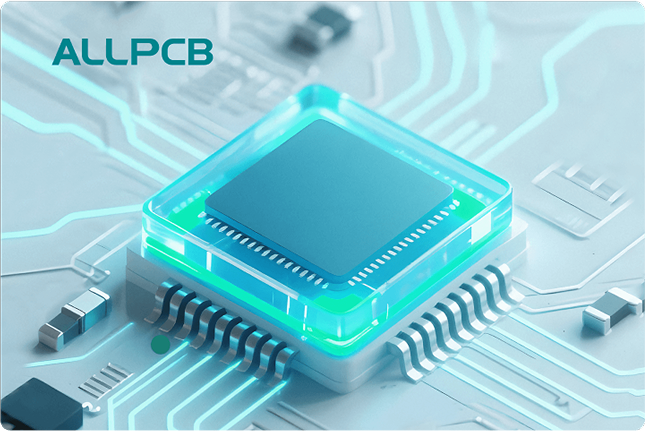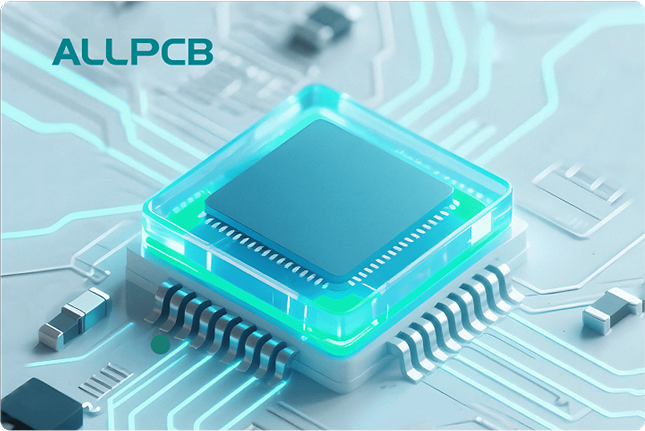In the world of PCB design and manufacturing, counterfeit electronic components are a growing threat that can derail your project, damage your reputation, and even compromise safety. If you're searching for ways to ensure counterfeit electronic components detection and avoiding fake components PCB, you're in the right place. This guide will walk you through how to identify risky suppliers, verify authorized distributors, and protect your supply chain with practical steps and checklists. Let’s dive into the details of securing your projects from the dangers of counterfeit parts.
Why Counterfeit Parts Are a Serious Threat to Your PCB Project
Counterfeit electronic components are not just a minor inconvenience; they pose significant risks to your project’s success. These fake parts are often substandard, recycled, or misrepresented as genuine, leading to failures in performance, safety hazards, and costly delays. According to industry reports, counterfeit components have led to billions of dollars in losses annually across electronics manufacturing sectors. The problem is especially critical in industries like aerospace, automotive, and medical devices, where a single faulty component can have catastrophic consequences.
Beyond financial loss, using counterfeit parts can damage your brand’s reputation if products fail in the hands of customers. With the rise of global supply chains, the risk of encountering fake components has increased, making it essential to know how to spot and avoid them. This blog will arm you with the knowledge and tools to safeguard your projects through supply chain security electronic components practices.

What Are Counterfeit Electronic Components?
Counterfeit electronic components are unauthorized reproductions, recycled parts, or defective items misrepresented as authentic products from original manufacturers. These parts may be remarked (relabeled to appear as a higher-grade component), cloned, or supplied with forged documentation. Common issues with counterfeit components include:
- Poor performance due to substandard materials or manufacturing.
- Incompatibility with design specifications, such as incorrect impedance values (e.g., a resistor labeled as 10 kΩ but measuring 8 kΩ).
- Shortened lifespan, leading to premature failure in critical applications.
The first step in counterfeit electronic components detection is understanding what to look for. By knowing the signs of fake parts, you can prevent them from entering your supply chain.
The Dangers of Dealing with Blacklisted Suppliers
A "blacklist" in the context of PCB component suppliers refers to vendors or distributors known for supplying counterfeit or substandard parts. These suppliers often operate in gray markets, offering components at suspiciously low prices without proper documentation or traceability. Engaging with blacklisted suppliers can lead to:
- Receiving fake or defective components that fail during testing or in the field.
- Legal liabilities if your product causes harm due to counterfeit parts.
- Delays in production as you scramble to source replacements.
To avoid these risks, it’s crucial to build a robust verification process for every supplier you work with. Let’s explore how to identify and steer clear of problematic sources while focusing on avoiding fake components PCB.
How to Identify Blacklisted or Risky Suppliers
Identifying unreliable suppliers before they impact your project requires vigilance and research. Here are key red flags to watch for:
- Unrealistic Pricing: If a supplier offers components at prices significantly below market rates, it’s a warning sign. Genuine parts from reputable manufacturers have consistent pricing due to production and quality control costs.
- Lack of Documentation: Legitimate suppliers provide certificates of conformance, traceability documents, and manufacturer datasheets. If a supplier cannot produce these, walk away.
- Poor Communication: Suppliers who are evasive about their sourcing practices or unwilling to answer questions about part origins are likely hiding something.
- No Physical Address or Verifiable History: A reputable supplier will have a verifiable business location and a history of working with other manufacturers. Be cautious of suppliers operating solely online with no transparency.
By keeping an eye out for these warning signs, you can avoid blacklisted suppliers and focus on building a secure supply chain.
Authorized Component Distributor Verification: Steps to Ensure Legitimacy
One of the most effective ways to avoid counterfeit parts is to source components exclusively from authorized distributors. These distributors are directly partnered with original component manufacturers, ensuring authenticity and quality. Here’s how to perform authorized component distributor verification:
- Check Manufacturer Websites: Most component manufacturers list their authorized distributors on their official websites. Cross-check your supplier against this list.
- Request Proof of Authorization: Ask the distributor for documentation proving their authorized status, such as a signed agreement with the manufacturer.
- Verify Contact Information: Ensure the distributor’s contact details match those provided by the manufacturer. Counterfeiters often mimic legitimate distributors with slightly altered names or domains.
- Audit Their Processes: Reputable distributors follow strict anti-counterfeiting standards, such as AS5553, which outlines guidelines for avoiding fake parts. Confirm that your distributor adheres to these protocols.
By taking these steps, you can confidently source components from trusted channels and minimize the risk of encountering fakes.
Component Quality Control Checklist: A Must-Have Tool
To further protect your project, implementing a component quality control checklist is essential. This checklist helps you systematically inspect and verify components before they’re integrated into your PCB assembly. Below is a practical checklist you can adapt for your needs:
- Visual Inspection: Check for discrepancies in labeling, packaging, or physical appearance. Look for signs of tampering, such as scratches or inconsistent markings.
- Part Number Verification: Confirm that the part number matches the manufacturer’s datasheet and your bill of materials (BOM).
- Electrical Testing: Use a multimeter or other testing equipment to verify key parameters like resistance, capacitance, or voltage ratings. For example, if a capacitor is rated at 100 μF, ensure it measures close to this value under test conditions.
- Traceability Check: Request lot codes or batch numbers and trace them back to the manufacturer to confirm authenticity.
- Third-Party Testing (if needed): For high-risk or critical components, consider sending samples to a certified lab for in-depth analysis, such as X-ray inspection to detect internal defects.
Using this checklist as part of your incoming inspection process can catch counterfeit parts before they cause problems in your assembly.

Strengthening Supply Chain Security for Electronic Components
Securing your supply chain is not just about avoiding counterfeit parts; it’s about building a resilient and transparent process for sourcing components. Here are actionable strategies to enhance supply chain security electronic components:
- Partner with Trusted Manufacturers: Work with PCB manufacturing partners who have established relationships with vetted suppliers. These partners often have rigorous quality control measures in place.
- Maintain an Accurate BOM: Ensure your bill of materials is detailed and specifies exact part numbers, manufacturers, and certifications. This reduces the risk of unauthorized substitutions.
- Stay Informed on Industry Trends: Keep up with reports on counterfeit trends and blacklisted suppliers through industry news and organizations like ERAI, which tracks counterfeit incidents.
- Implement Anti-Counterfeiting Technologies: Use advanced packaging and labeling solutions, such as tamper-evident seals or RFID tags, to verify component authenticity.
By adopting these practices, you create multiple layers of defense against counterfeit parts infiltrating your supply chain.
Practical Tips for Avoiding Fake Components in PCB Projects
Beyond checklists and supplier verification, there are everyday practices that can help with avoiding fake components PCB. These tips are easy to implement and can save you from costly mistakes:
- Buy in bulk from trusted sources to reduce the need for last-minute purchases from unverified suppliers.
- Store components in controlled environments to prevent damage or tampering before use.
- Train your team on counterfeit detection techniques, including visual and electrical testing methods.
- Document every purchase, including supplier details, invoices, and inspection results, for future reference.
These small steps add up to a significant reduction in risk for your PCB projects.
The Role of Industry Standards in Combating Counterfeits
Industry standards play a vital role in fighting counterfeit components. Standards like SAE AS6171 and AS5553 provide guidelines for detecting and avoiding fake parts. These standards outline testing methods, supplier evaluation criteria, and documentation requirements to ensure authenticity. Familiarize yourself with these standards and ensure that your suppliers and manufacturing partners comply with them.
For instance, AS6171 emphasizes comprehensive testing protocols, including external visual inspection, marking permanency tests, and even destructive physical analysis for high-risk components. Adhering to such standards not only protects your project but also demonstrates your commitment to quality and reliability.

What to Do If You Encounter Counterfeit Parts
Despite your best efforts, you might still encounter counterfeit components. If this happens, take immediate action to minimize damage:
- Quarantine the Parts: Isolate the suspected components to prevent them from being used in production.
- Document Everything: Record details of the supplier, purchase date, and inspection findings for potential legal action or reporting.
- Report the Incident: Notify industry organizations like ERAI to warn others about the supplier and contribute to broader counterfeit prevention efforts.
- Source Replacements: Quickly identify a trusted supplier to replace the counterfeit parts and keep your project on track.
Handling counterfeit incidents promptly can limit their impact on your project timeline and reputation.
Conclusion: Protect Your PCB Projects with Vigilance and Best Practices
Counterfeit electronic components pose a real and growing threat to PCB projects, but with the right strategies, you can protect your work from their devastating effects. By focusing on counterfeit electronic components detection, performing authorized component distributor verification, and using a component quality control checklist, you can build a secure supply chain. Prioritizing supply chain security electronic components and avoiding fake components PCB ensures that your projects meet the highest standards of quality and reliability.
Start by evaluating your current suppliers, implementing strict quality checks, and staying informed about industry trends. With these steps, you’ll be well-equipped to avoid the pitfalls of counterfeit parts and deliver exceptional results for your clients and end-users. Trust in verified sources and robust processes is the foundation of successful PCB manufacturing.
 ALLPCB
ALLPCB







